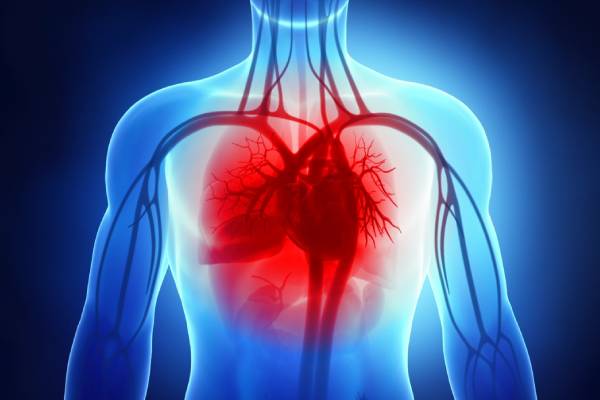
The term heart failure is used when the heart fails to perform its basic function to pump blood throughout the body. Heart failure causes a group of symptoms that are interrelated and all of which contribute to heart failure. Older people might also suffer from heart failure since their heart's ability to pump blood throughout the body reduces, but in many cases, heart failure occurs in young and middle-aged adults due to a combination of risk factors that lead to heart failure.
Types Of Heart Failure
Three types of heart failure take place in individuals:-
The left side of the heart comprises the upper left and lower left heart chambers(left atrium and left ventricle) and two heart valves, Mitral Valve and Aortic Valve. The Mitral valve is located between the upper left and lower left chambers of the heart. The upper left chamber of the heart receives blood rich in oxygen from the pulmonary veins situated in the lungs. When the upper left heart chamber is filled with oxygen-rich blood, the mitral valve opens and blood flows to the lower left heart chamber. The aortic valve is the last valve of the heart, located between the lower left chamber of the heart and the aorta. This is one of the most important structures of the circulatory system since it originates from the lower left heart chamber and extends to the abdomen where it transports oxygenated blood to all parts of the body. Therefore, the left side of the heart is responsible for receiving oxygenated blood from the lungs through the pulmonary artery and transports it to the other parts of the body through the aorta. Failure on the left side of the heart causes the blood to flow back to the lungs, causing respiratory problems and fatigue due to less supply of the blood. Symptoms include an increase in the rate of breathing and make the lungs work harder. If it becomes severe, it causes a build-up of fluid in the lungs, which makes the individual cough blood. Late symptoms of left-sided heart failure include cyanosis, causing the skin to turn grayish-blue in color.
The right side of the heart comprises the right atrium, right ventricle, pulmonic, and tricuspid valve. The tricuspid valve is a boundary existing between the upper right heart chamber and the lower right heart chamber. The tricuspid valve is responsible for the transformation of deoxygenated blood into oxygen-rich blood. The blood flows from the upper right heart chamber to the lower right heart chamber, and it then exits the heart through the pulmonary artery. The pulmonic valve, also known as the pulmonary valve, is the valve that helps circulate blood in the body. The pulmonary valve is located between the lower right heart chamber and the pulmonary artery. The pulmonary valve opens when the pressure in the lower right heart chamber(right ventricle) rises above the pressure in the pulmonary artery, and the valve closes when the pressure in the right ventricle drops rapidly. The right side of the heart is responsible for the pulmonary circulation of blood. Failure on the right side of the heart increases pressure in the arteries of the lungs or causes obstruction of blood flow from the right ventricle to the pulmonary artery. Failure in the right ventricle develops fluid build-up in the body. This causes swelling of legs, feet, ankles, abdomen, etc.
This refers to the failure of both chambers of the heart. When the left ventricle fails to perform its function, fluid develops in the lungs, which puts pressure on the right ventricle.
Symptoms Of Heart Failure
The signs and symptoms indicating heart failure:-
Risk Factors Contributing To Heart Failure
Further Complications
Preventive Measures
The prevention plan involves four main points:-
The cardiology team of Dr. Swapnil Mate's Cardiology clinic includes experienced cardiologists, cardiac surgeons, cardiac imaging specialists who help detect the problem and recommend the ideal surgery to the patients. They mention the advantages and risks associated with the surgeries they plan to do on their cardiac patients. Consult Dr. Swapnil Mate for the best medical assistance.
